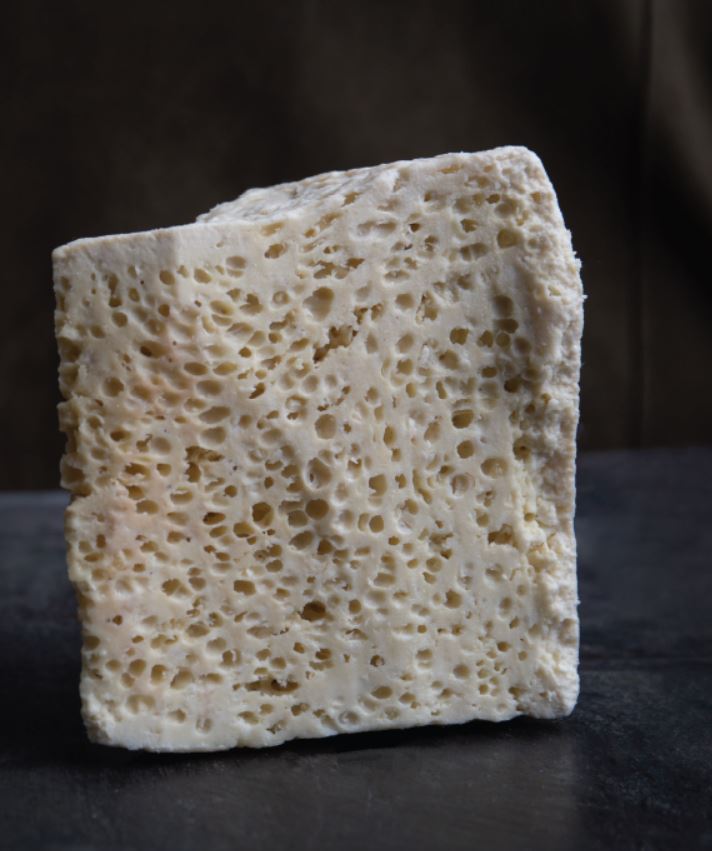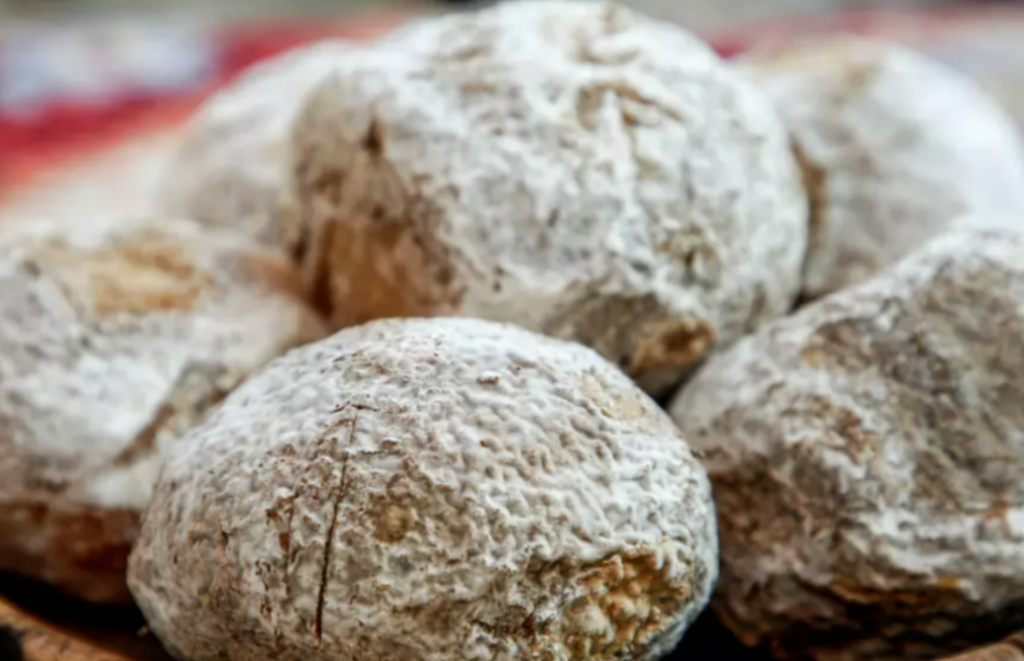Discourse of Flavours
Nothing breathes life into a tapestry-draped Akhmetian hearth like the sight of a host offering dishes prepared with care and tradition. In multicultural Akhmeta, the hosts come from a rich mosaic of origins: Georgians, Ossetians, Kists, Chechens, and relocated Pshavs and Khevsurians, not to mention the Tush people. Through harmonious coexistence and the exchange of traditions, these communities have, over centuries, crafted a truly unique culinary culture.
Akhmeta’s cuisine is infused with the deep-rooted flavors of Kakheti, offering treasures like Mtsvadi – pork barbeque grilled over vine branches, the savory lamb Chakapulisimmered in aromatic herbs, and the iconic Khinkalidumplings. Kharchlama – tender, slow-cooked meat flavored with a blend of Kakhetian spices and fresh herbs, is regarded as the crown jewel of the feast, while no Kakhetian table is complete without Churchkhela, the region’s sweet symbol. Strings of walnuts or hazelnuts are dipped in Badagi (grape must) to create this nourishing treat, known as the most trusted provision for Georgian warriors before heading into battle.
Beyond these renowned staples, Akhmetian kitchens are alive with a culinary spirit that reimagines tradition. This cuisine is remarkable not only for its bold and unconventional combinations of flavors and influences but also for the ritualistic customs surrounding the preparation of certain dishes.

Among its standouts is the Dambalkhacho, a traditional delicacy brought to Akhmeta by the Pshavians, who, till today, devotedly preserve its ancient cooking method. To make Dambalkhacho, Pshavian homemakers knead curd cheese into small disks and dry them in woven baskets, stored in dark, shaded areas. The disks are hung above the central hearth, absorbing the smoky aromas from the fire. Once thoroughly dried, the next step involves placing the cheese in clay jars, where it softens and matures over 1.5–2 months. During this time, the cheese develops a distinctive layer of ‘noble mold’ on the outside. This mold is both healthful and essential to the cheese’s flavor, setting Dambalkhacho apart as a highlight of the Akhmetian table.
Akhmetian ‘sufras’ (dinner tables) also showcase Ossetian Khabizginas – thinnest pastry bloated with a creamy mixture of cheese and potatoes. From the Kist community, visitors are treated with historical delicacies such asJijig-galnish, a harmonious blend of meat and dough, and the traditional Siskal-nekch -wheresiskal refers to fried cornbread paired with nekhtsh, a cheese with a unique flavor. Those dishes are complemented by a beverage that is unparalleled in the world: Kist Rosehip Beer. Crafted using a unique technique, this beer is cherished for its distinctive taste and ties to the region’s history.
Akhmeta’s culinary heritage proudly includes the unique Choban-kaurma, also known as shepherd’s kaurma. Locals say that to truly experience its authentic taste, one must try it, prepared by shepherds’ hands, at the edge of mountain and plain. If lucky, curious onlookers might even witness its rare and fascinating preparation process. The course begins with lamb meat, which is cut into small, even pieces and placed into a sheepskin bag (Guda). Once filled, the pouch is sealed tightly by the shepherds and buried into a freshly dug earth pit. The Guda is then covered with soil, and a fire is lit above, allowing the meat to “braise” slowly within the ground. Shepherds add their own touch with simple yet aromatic spices and herbs. Essentials like salt, garlic, and wild mint are often carried in their saddlebags. Occasionally, the dish is enhanced with savory herbs like chondari (thyme)orkvliva (watercress), which lend a fresh, mountain-inspired twist to the dish.
This culinary palette is further enriched by the distinctive dishes and drinks crafted within Tusheti’s slate clad nestling houses. The spirit of Tushetian hospitality is best captured in the phrase: ‘A guest is a gift from God.’ Even unexpected visitors to Tushetian sacred feasts (khatoba) are honored with the chance to taste the holy drink—Aludi, a traditional beer brewed from barley. The preparation of Aludi begins with the crafting of maltfrom barley. The malt is boiled and then transferred into another vessel for purification. To enhance its potency, a specially prepared ingredient called Sve – is often added, giving Aludi its distinctive alcoholic strength. The process starts approximately seven days before the feast day, that is referred to as “hanging the cauldrons.” Brewing requires meticulous attention and traditional expertise, passed down through generations. Once the beer is ready, the sacred ritual marks its debut. On the day of the feast, the elder of the community recites ablessing prayer, invoking goodwill and gratitude and with it, the Tushetian sacred feast begins.
For centuries, the Tushs have faithfully guarded their recipes and cooking traditions. For example, every local knows how to prepare Khagi—specially preserved meat to endure the long, cold winters. Tushs’ are also high masters at making yeast-free breads like Khmiadi, Gordila, Mosmula, and Katori.The latter, often referred to as ‘Tushetian khachapuri’, is a delicate, paper-thin pastry, filled with a molten blend of butter and cottage cheese.
No Tushetian, therefore Akhmetian feast is considered complete without its crowning jewel gracing the center of the table: the majestic Guda cheese. This remarkable delicacy is one of the most fascinating products not only in Georgian, but in global cuisine as well. Crafting process of Guda cheese is intricate and meticulous, akin to creating a work of art. It undergoes a carefully timed and skillful course before achieving its final form and flavor.
The journey of genuine Guda cheese begins in Tusheti during the summer season. At midday, sheep flocks are herded from the pasture to the milking enclosure, where the process begins. The freshly collected milk is filtered through a sieve layered with healing herbs such as nettle, wild nettle, and needle grasses. These herbs, prized in Tusheti for their natural filtering features, are still widely used today. The cheese-making process is then entrusted to the “mekvele” (cheesemaker), who oversees every step. Before reaching the Guda sack, the cheese undergoes a series of precisely timed stages, including the initial curdling, insulation in felted Nabadi, and final pressing. The resulting round, even, cylindrical wheels are carefully placed into pre-prepared sheepskin bags called Guda. Each bag, containing approximately 4-5 wheels, is layered with salt and sealed tightly with a twine knot known as a “kanchi.” The bags are then transferred to a dedicated cheese-aging room, where they are again wrapped in felt to maintain warmth for two days. To ensure even salting, the bags are turned and reshaped three times daily for the first few days. Following this, Finally, the cheese begins a maturation and ripening period within the Guda, which lasts approximately sixty days. The result is a radiant, slightly sun-kissed white cheese, punctuated with small holes, emerging as the pride of Akhmeta. When presented at a table adorned with flavorful dishes, it is a testament to centuries of craftsmanship and tradition

And at last, but not least, Akhmeta’s multi-layered culinary journey would be partial without mentioning a singular title. Not a dish, nor an ingredient, but rather a culinary masterpiece published in 1874: the book labeled ‘The Complete Cuisine’. This seminal work was authored by an extraordinary woman, Barbare Jorjadze, a native of the village of Kistauri in Akhmeta. A writer, public figure, and ardent advocate for women’s rights, Barbare was a trailblazer who brought her intellectual and social activism to the world of Georgian gastronomy. During an era when culinary knowledge was predominantly passed down orally or kept within families, ‘The Complete Cuisine’ was a revolutionary effort. It aimed to organize, structure, preserve, and share the culinary traditions and expertise to a wider public. Barbare’s book was not just a collection of recipes—it was a culinary manifesto that became a timeless bestseller from the day of its publication. Till today thebook iscelebrated for its meticulous structure and deep content and remains one of the most comprehensive culinary anthologies, encompassing the full treasury of Georgian cuisine.